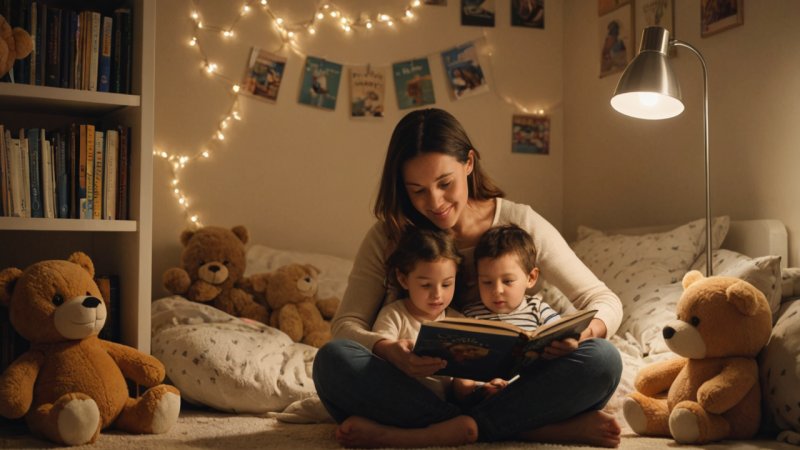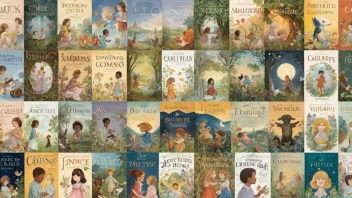Choosing the best bedtime stories for kids can feel like a daunting task, especially given the vast array of options available. Bedtime stories serve as a wonderful bridge between the day’s activities and the peaceful quiet of sleep. They can ignite the imagination, foster a love for reading, and provide a comforting routine that helps children wind down. But how do you select the perfect stories that meet your child’s needs and preferences? This guide will explore various factors that can help you make informed choices, ensuring that bedtime becomes a delightful and enriching experience for both you and your little ones.
Understanding Your Child’s Interests
The first step in choosing bedtime stories is to understand your child's interests. Children are naturally drawn to different themes, characters, and settings. Some may enjoy tales of adventure and exploration, while others might prefer stories about animals or fairy tales filled with magic. Observing what your child enjoys during the day can provide valuable insights. Ask questions like:
- What are their favorite characters from movies or TV shows?
- Are they intrigued by certain animals or mythical creatures?
- Do they prefer stories that are funny, spooky, or heartwarming?
Taking note of these preferences can guide you toward books that will captivate their imagination at night.
Choosing Age-Appropriate Books
Age-appropriateness is crucial when selecting bedtime stories. Books that are too advanced may frustrate your child, while those that are too simplistic could bore them. Familiarize yourself with age guidelines provided by publishers or educational experts. Here are some general age ranges and their corresponding book types:
- Infants to Toddlers (0-3 years): Look for board books with simple words, colorful illustrations, and interactive elements.
- Preschoolers (3-5 years): Picture books with slightly more complex narratives and engaging characters will resonate.
- Early Readers (5-7 years): Simple chapter books that encourage independent reading can be introduced.
- Middle Grade (8-12 years): Stories with deeper plots and character development that can provoke thought and discussion.
By matching the complexity of the story to your child's developmental stage, you can ensure that they are both entertained and engaged.
Considering the Length of the Story
The length of the story is another important factor. After a long day, children may find it difficult to sit through lengthy narratives. Shorter stories, or even chapters from a longer book, can be ideal for creating a calming bedtime atmosphere. As a rule of thumb, consider the following:
- For younger children, opt for stories that can be read in 5-10 minutes.
- For older children, stories that last 10-15 minutes can be appropriate, especially if they are part of a series.
Finding the right balance of length will help maintain your child’s interest while also fitting into your evening routine.
Exploring Different Themes and Messages
Bedtime stories often carry themes and messages that can have a lasting impact on children. Look for books that teach valuable lessons, promote kindness, or encourage imagination. Some themes to consider include:
- Friendship: Stories that highlight the importance of friendship can foster social skills.
- Bravery: Tales of courageous characters can inspire children to face their fears.
- Imagination: Books that encourage creativity can help develop your child's own storytelling abilities.
By choosing stories with positive messages, you can help instill important values in your child while making bedtime a meaningful experience.
Incorporating Diversity and Inclusion
It is essential to expose children to diverse cultures, perspectives, and experiences through literature. Select books that feature characters from different backgrounds, abilities, and experiences to broaden your child’s understanding of the world. Look for:
- Stories featuring protagonists from various cultural backgrounds.
- Books that highlight unique family structures and lifestyles.
- Stories that celebrate diversity in abilities, helping children understand and embrace differences.
Diverse literature can not only entertain but also educate, helping to foster empathy and acceptance from an early age.
Creating a Cozy Bedtime Routine
Finally, creating a cozy bedtime routine can enhance the experience of reading together. Consider dimming the lights, using soft pillows or blankets, and keeping a consistent bedtime schedule. This calm atmosphere can make your child look forward to storytime each night. Additionally, make it interactive: ask your child questions about the story, let them choose which book to read, or encourage them to predict what might happen next. This engagement helps build their comprehension skills and makes storytime a cherished memory.
Conclusion
Choosing the best bedtime stories for kids is a delightful journey that combines understanding your child's interests, selecting age-appropriate content, considering the length and themes of the stories, and creating a cozy routine. By carefully curating your bedtime reading selection, you foster not only a love for literature but also a lasting bond with your child. When bedtime becomes a magical time filled with stories and snuggles, it can become a cherished ritual that nurtures both imagination and connection, paving the way for a lifetime of reading enjoyment.






